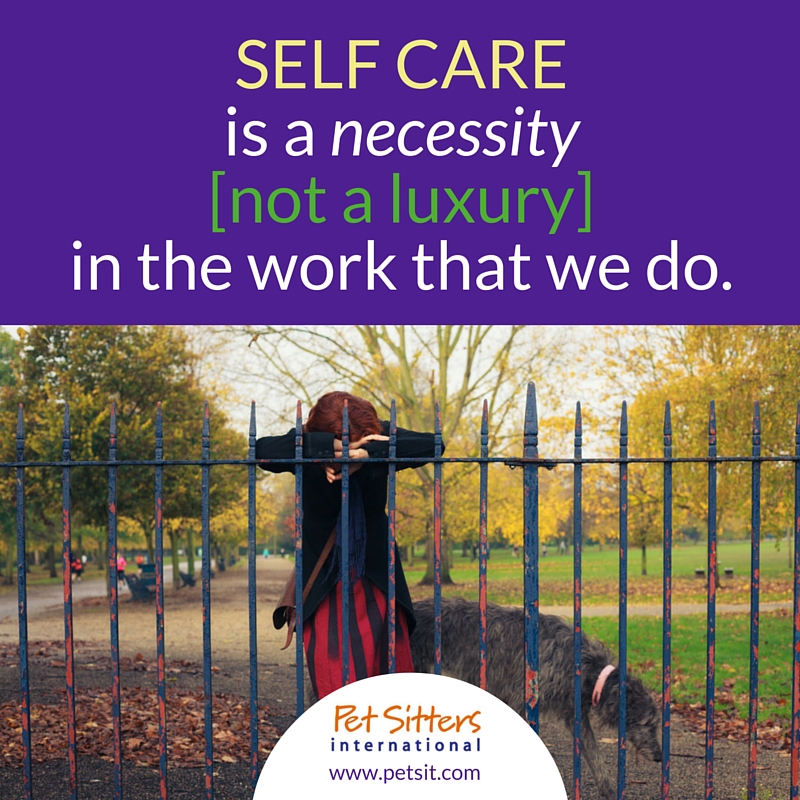Pet sitter burnout and compassion fatigue: What you should know

Understand that as a pet sitter, you are going to have times that you feel overwhelmed, stressed out or just dog-tired…it’s normal! But, always keep in mind why you began pet sitting in the first place. Most likely, your love for animal and desire to be your own boss were driving factors. When you have bad days, focus on those perks. As a business owner, you control the course of your career—so if you are not able to enjoy time with the pets anymore, or if you are letting your business “run you,” take a close look at your business, learn more about burnout, compassion fatigue and what changes you can make to ensure that you can enjoy your career as a professional pet sitter for years to come.
While many think of burnout or compassion fatigue as issues experienced by industry veterans only, understand that professional pet sitters can be impacted at any stage of their careers...and understanding the causes, symptoms and necessary responses to burnout and compassion fatigue when you first open your pet-sitting service can help you implement measures to prevent and manage future issues.

Please Note:
Many of the tips below can help pet sitters prevent burnout or work through compassion fatigue, but keep in mind this advice does not provide or replace advice from a healthcare or mental-healthcare professional—so if your symptoms are not manageable, consult an expert!
Burnout, Compassion Fatigue and the Professional Pet Sitter
It’s no surprise that small-business owners are prone to experiencing burnout, but it often seems that pet-care professionals, in particular, are susceptible to burnout and “compassion fatigue.”
While the symptoms may be similar, burnout and compassion fatigue are not the same.
Burnout is typically associated with where you work—and if you leave the job, you would leave the burnout. [An example could be developing burnout from a specific job or employer that constantly asked you to work overtime, paid very little and didn’t encourage positive relationships between co-workers.]
On the other hand, compassion fatigue is more associated with the work you do—so it follows you wherever you go. [For example, while a nurse could go to work for a different hospital, the fatigue he or she experiences from dealing with life and death situations, seeing individuals suffer, etc. would still be present].

Pet Sitter Burnout:
Since professional pet sitters often own their own businesses and work for themselves, it can be confusing to understand how burnout applies: If burnout is associated with where you work and can be improved by leaving that specific job, what does that mean for pet sitters who work for themselves?
While no one wants to experience burnout, professional pet sitters who own their own businesses are in a unique position to determine the causes of their burnout and make changes in their business to alleviate the problems. If you worked for another company, finding another job might be the only way to improve working conditions--but because you are your own boss, YOU are in control of changing and improving your working conditions to improve your quality of life and job satisfaction.
Learn more about pet sitter burnout, the causes and the symptoms.
Pet Sitter Compassion Fatigue:
Professional pet sitting is by definition a career that provides care and service. Because of the depth of that caring and the stresses of that service, professional pet sitters can fall prey to compassion fatigue.
Because compassion fatigue is associated with the work you do (and not just your specific working conditions), the causes cannot be eliminated like you can the causes of pet sitter burnout. However, understanding what compassion fatigue is, recognizing the symptoms and identifying the causes can help you prevent, address or manage compassion fatigue.
Learn more about pet sitter compassion fatigue, the causes and symptoms.







Comments
Lori
S k
Diane Kuschel
This along with counseling about my limits and business decisions, as well as self-care, help me to take better care of myself. But I had many lessons to learn along the way, and still do. Like the 31 days in a row of work with no time off...and subsequent complete burnout. And the realization that I, like many caregivers, give too much: way more than is needed or offered to the human clients. So I've worked at backing off of that bit by bit, and they still love my work and how I care for their babies. Another lesson in progress. Thanks!
Aimrr
MT
Kathy
JH
Puppy Sitter
Misty Freeze